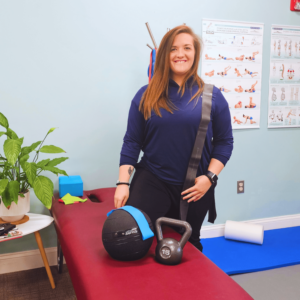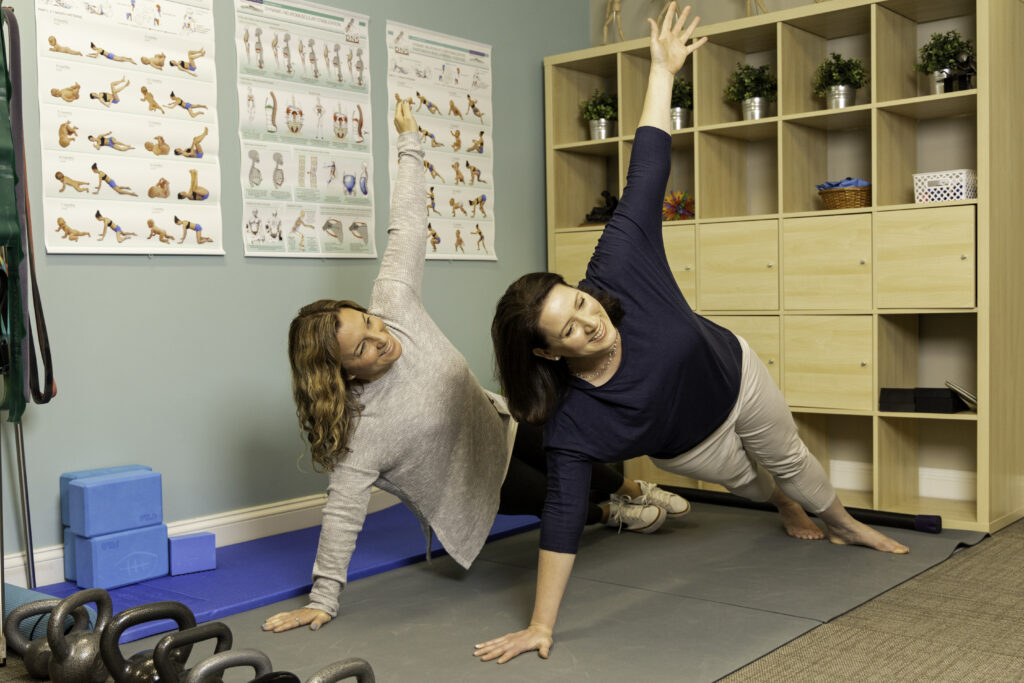When working in an office setting or at home on your computer, you might be at higher risk of developing poor posture, spinal injuries, chronic pain, and obesity. Even children have had to adjust to virtual learning. In our ever-increasingly virtual world, for most of us, it’s inevitable that we spend a prolonged amount of time in front of a computer screen.
So are we doomed? What can we do? It turns out that there are certain ways to set up and interact with our work environment that can help prevent damage.
Set up Your Work Area in an Ergonomic Way
Ergonomics is the study of human interaction with different tools and environments. The goal of ergonomics is to maximize human comfort and efficiency. Over time, advances in the field have led to an understanding of the optimal work environment.
Research has confirmed that if you sit at a computer or monitor, it should be an arm’s length away from your face, and positioned so that it is at eye level. This will help prevent the upper back and shoulders from slouching.
To avoid pain in the lower back, try to find a chair that has a large padded cushion as well as a lumbar support pad attached to the backrest. To reduce the risks associated with repetitive overstretching, get a chair with wheels. As far as sitting in the chair, sit all the way back so that you are using the backrest. Additionally, you’ll want to set the chair at a height so that your feet can touch the floor and the armrests meet your arms at a 90-degree angle.
While we’re on the topic of overstretching, it’s also important to keep your keyboard, telephone, notepad, and anything else you use frequently throughout the day within arm’s reach.
Take Breaks and Move Around
The average adult sits at a desk for six and a half hours a day. For kids aged between twelve and nineteen, it’s eight hours a day for virtual learning. This is alarming because unfortunately, even if you have set up your work environment following every nuance modern science prescribes, you still can’t stay planted at your desk for that long of a time.
Sitting for extended periods of time has numerous detrimental effects. It can lead to atrophy (loss of muscle) in the legs and glutes. It can cause poor blood flow. It can weaken the heart and it can even increase mortality.
Additionally, staring at a computer screen for extended periods can cause eye strain and blurred vision. Headaches associated with eye strain are another common problem. Keeping your eyes closely focused on a screen all day causes increased tension in your neck muscles. This increased tightness is often associated with head, neck, and jaw pain.
To minimize the negative impact sitting for extended periods has on your body, do the following:
- Get an adjustable standing desk (so you can toggle between standing and sitting throughout the day)
- Go for walks during breaks It’s important to give your body, eyes, and brain a rest throughout the day – ideally, get outside and go for a walk (without your phone!) take a break at least once an hour
It doesn’t seem like much, but making sure to take a break and move around every day will have a huge positive impact over the long term.
You just finished this article. How long have you been sitting? It might be time to get up and take a walk!
Or, maybe you’re reading this because when you are up and moving around, you’ve been experiencing back pains. If you’ve noticed something is going on in your upper back, or with your child due to virtual learning give us a call, our contact information is at the bottom of the page and we’d love to help you start working towards a life with no back pain!





